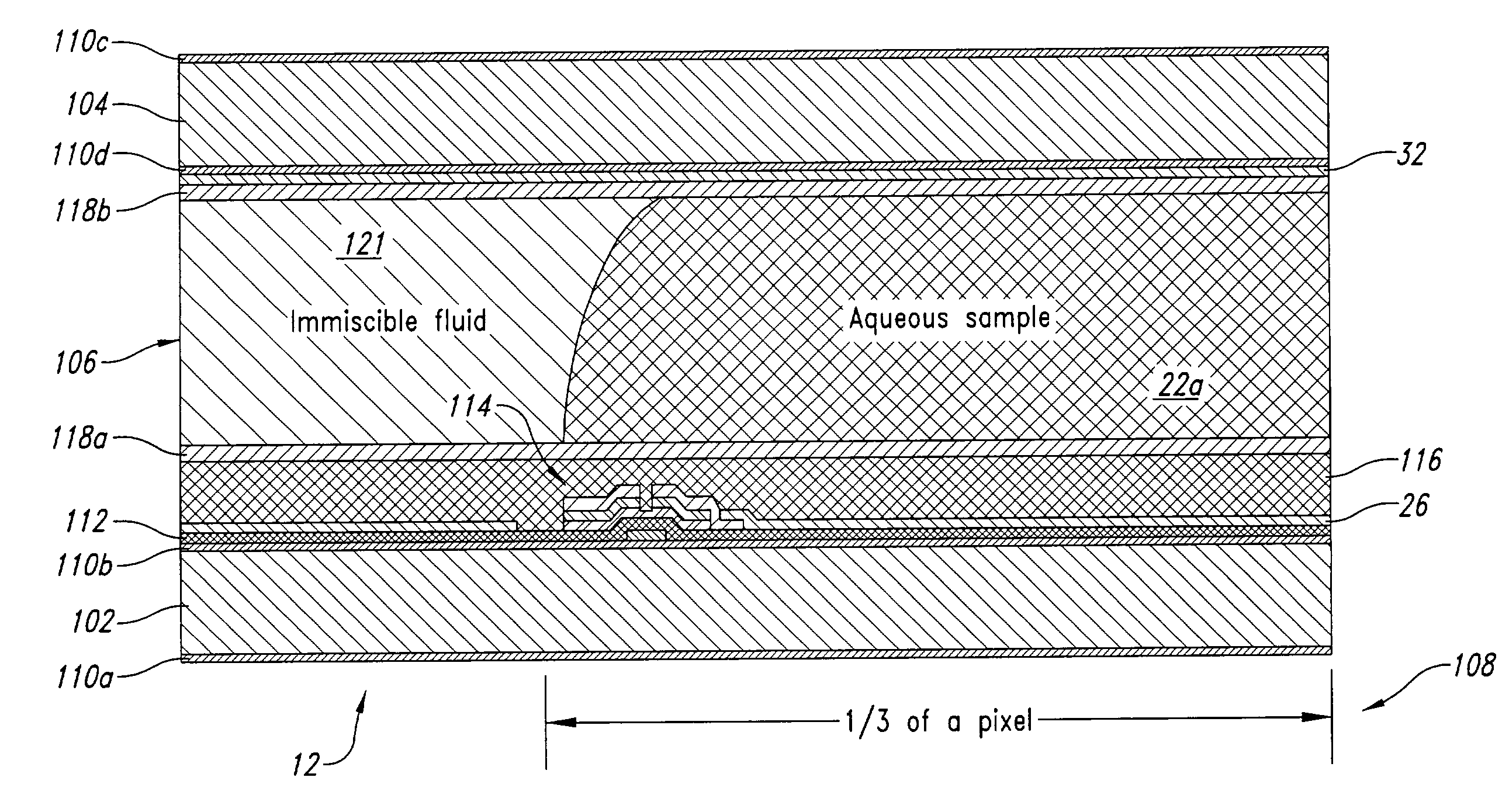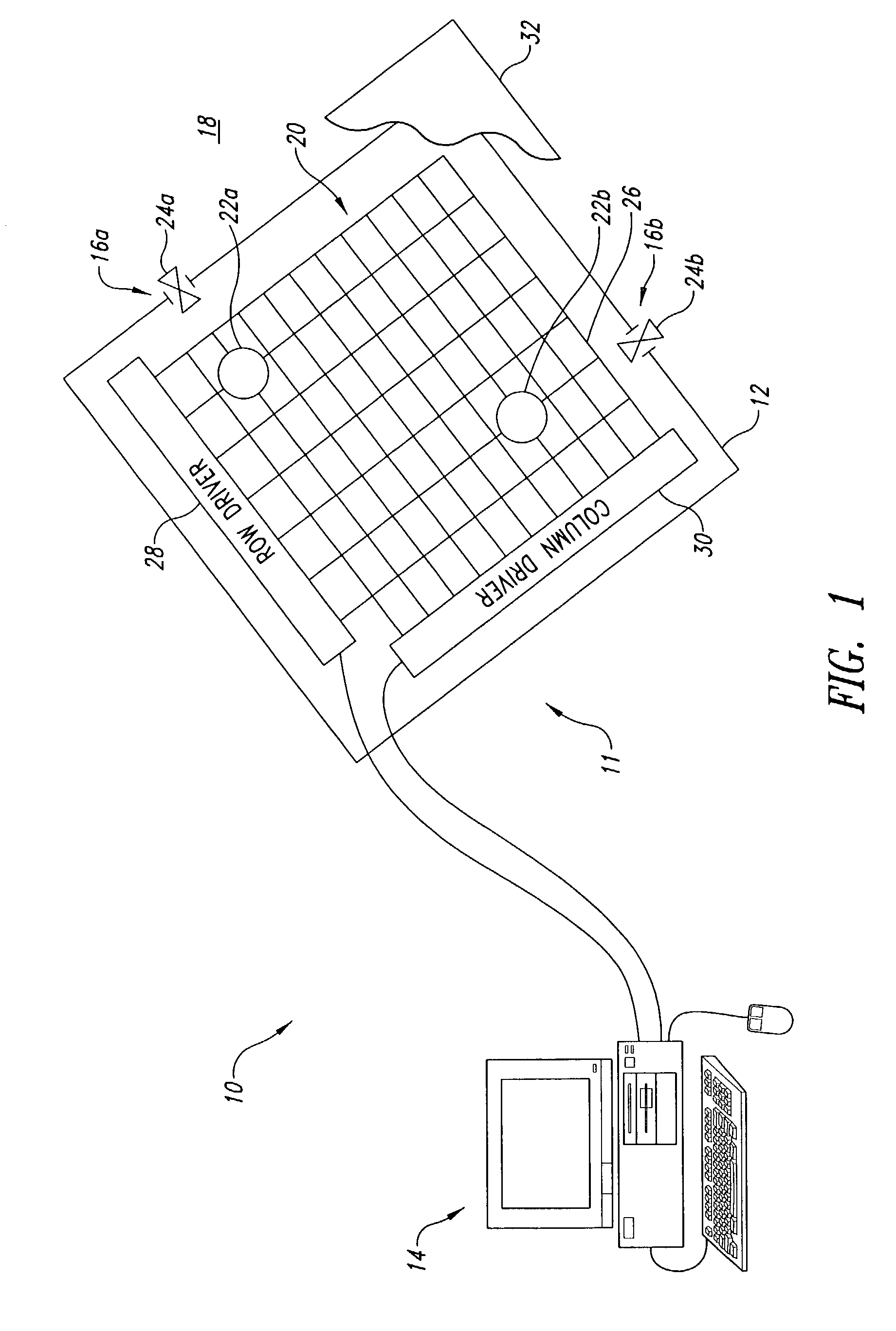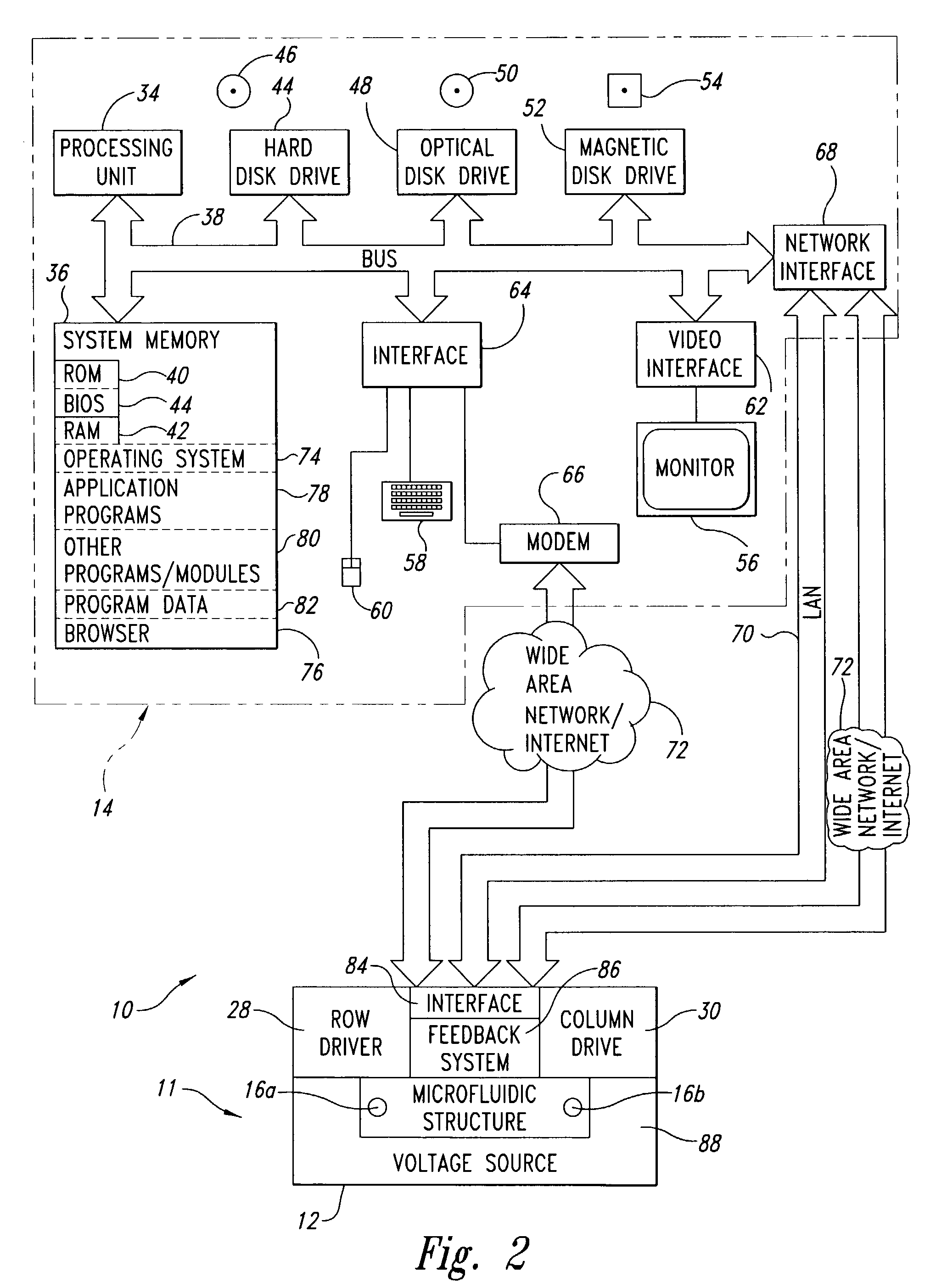Method, apparatus and article for microfluidic control via electrowetting, for chemical, biochemical and biological assays and the like
- Summary
- Abstract
- Description
- Claims
- Application Information
AI Technical Summary
Benefits of technology
Problems solved by technology
Method used
Image
Examples
first embodiment
[0061]FIG. 9 illustrates the feedback subsystem 86, employing a set of visual feedback sensors, for example, in the form of CCD sensor array or camera 132. The visual feedback sensors may take any of a variety of forms of photosensitive devices, including but not limited to one and two dimensional arrays of photosensitive sensors such as charge coupled devices (“CCDs”), Vidicon, Plumbicon, as well as, being configured to capture either still image or video image data.
[0062]The CCD sensor array or camera 132 is oriented to visual capture images of the through the transparent electrode 32. The image data 134 is supplied to the computing system 14 for analysis and / or display. The image date may be in suitable form for display on the active matrix display 56 without further processing. Thus, a live, or delayed, display of the actual movement of the bodies of fluid 22a, 22b may be provided. Suitable image processing software (e.g., application programs 78) may be loaded in the system mem...
second embodiment
[0063]FIG. 10 illustrates a feedback subsystem 86, employing a set of position detection sensors 138, and row and column detection circuitry 140,142, respectively. The position detection sensors 138 may be pressure sensitive, resistivity sensitive, or capacitivity sensitive.
[0064]One method of detecting the position of bodies of fluid 22a, 22b (e.g., drops or droplets) involves measuring the resistance between adjacent sensor electrodes. If the sensor electrodes are in electrical contact with the fluid body 22a, 22b, the application of a voltage pulse to one sensor electrode can be detected by an adjacent sensor electrode if the body of fluid 22a, 22b is in contact with both sensor electrodes. If the body of fluid 22a, 22b is not in contact with both sensor electrodes, the resistance of the air / immiscible fluid between the electrodes I too great for a pulse to be detected.
[0065]The feedback subsystem 86 may employ a TFT array of sensor electrodes by activating a row of sensor electr...
PUM
| Property | Measurement | Unit |
|---|---|---|
| Dielectric polarization enthalpy | aaaaa | aaaaa |
| Electric potential / voltage | aaaaa | aaaaa |
| Area | aaaaa | aaaaa |
Abstract
Description
Claims
Application Information
 Login to View More
Login to View More - R&D
- Intellectual Property
- Life Sciences
- Materials
- Tech Scout
- Unparalleled Data Quality
- Higher Quality Content
- 60% Fewer Hallucinations
Browse by: Latest US Patents, China's latest patents, Technical Efficacy Thesaurus, Application Domain, Technology Topic, Popular Technical Reports.
© 2025 PatSnap. All rights reserved.Legal|Privacy policy|Modern Slavery Act Transparency Statement|Sitemap|About US| Contact US: help@patsnap.com



